There are some moves we really feel working our abs and core when we do them. But there are others we don’t realize worked certain muscles until we are sore the next day!
These 3 compound exercises are a great way to strength multiple large muscles at once while also really working your core.
They are part of any core program I create because they not only help you burn more calories during your workout by working more muscles at once, but they also help you build strength while targeting your core.
Because a strong, lean core means doing more than just crunches!
Try using these three moves in your routine. The first two are even perfect as part of your upper body day!
Pull Up Holds:
Yup. Pull Up Holds. Now you may be thinking, “I can’t even do one pull up. How am I supposed to HOLD at the top!?”
A. Often if we set at the top we can perform short holds even if we aren’t yet able to complete a full one.
B. These holds can be done at the top, middle or even as an active hang at the bottom.
C. You can do them with your foot down for assistance so you take on as much weight as you can handle!
But pull ups are a more core intensive movement than we give them credit for. It’s why if you want to improve your pull ups, you also need to work on your core strength.
Or if your goal is a strong, lean core, you should also include some pull up work in your core routine. They will work not only your biceps but also your lats, serratus anterior and abs!
To make a hold even more intensive, if you’re ready for a challenge, you can add in bicycles or leg raises or knee tucks as you hold at the top!
The three basic Pull Up Holds are:
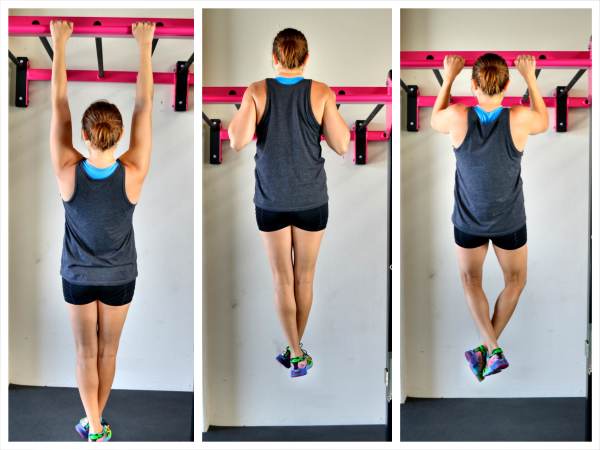
- Dead Hang – To do the Dead Hang, grab the bar with your hands about shoulder-width apart. Your palms can be facing toward you or away. Then hang from the bar with your arms straight. Your shoulders will be a bit raised as you hang from the bar. Press your chest up and out as you draw your shoulder blades together. Feel your shoulders sink down and your neck elongates as you retract your shoulder blades and hold. You should feel your back work as you hang. If you struggle with this, you may need to start with just a basic hang.
- Mid-Pull Up Hold – The Mid-Pull Up Hold is where you hold with your arms bent to about 90 degrees. Grab the bar and either pull up or set up with your arms bent to 90 degrees. Then hang, keeping your arms bent and chest pressed out. Don’t shrug or tuck your head as you hold. Really try to lead with your chest and feel the muscles of your back working. You can do a “mid” hold from really anywhere between the Dead Hang and full Pull Up and Hold.
- Pull Up and Hold – To do the Pull Up and Hold, set up at the top of the Pull Up with your chin above the bar and your chest pressed out. Hold here with your chin over the bar or even the bar at your chest. Keep your core tight and let your legs hang down as you hold your chin above the bar. Make your back and core really work with this move. Do not let your shoulders start to shrug as you hold. If you start to lose the hold, lower yourself down as slowly as you can and then perform a dead hang for a few extra seconds. If you can’t yet handle your full weight for the hold, lightly touch a foot down to the ground.
Push Up Holds:
Push Ups are basically moving planks that also work your chest, shoulders and triceps.
And when you HOLD at different points in the push up, you force your abs, and core in general, to work hard to maintain that nice straight line from your head to your heels.
Not only will you feel your abs and upper body working, but you’ll even feel your quads, inner thighs and glutes potentially working!
And if you can’t yet do a full push up from your toes, you can do these off an incline even for the best results OR potentially set at the position and perform shorter holds! Knee push up holds are also an option, BUT an incline is better for a more core-intensive movement!
The three basic Push Up Holds are:
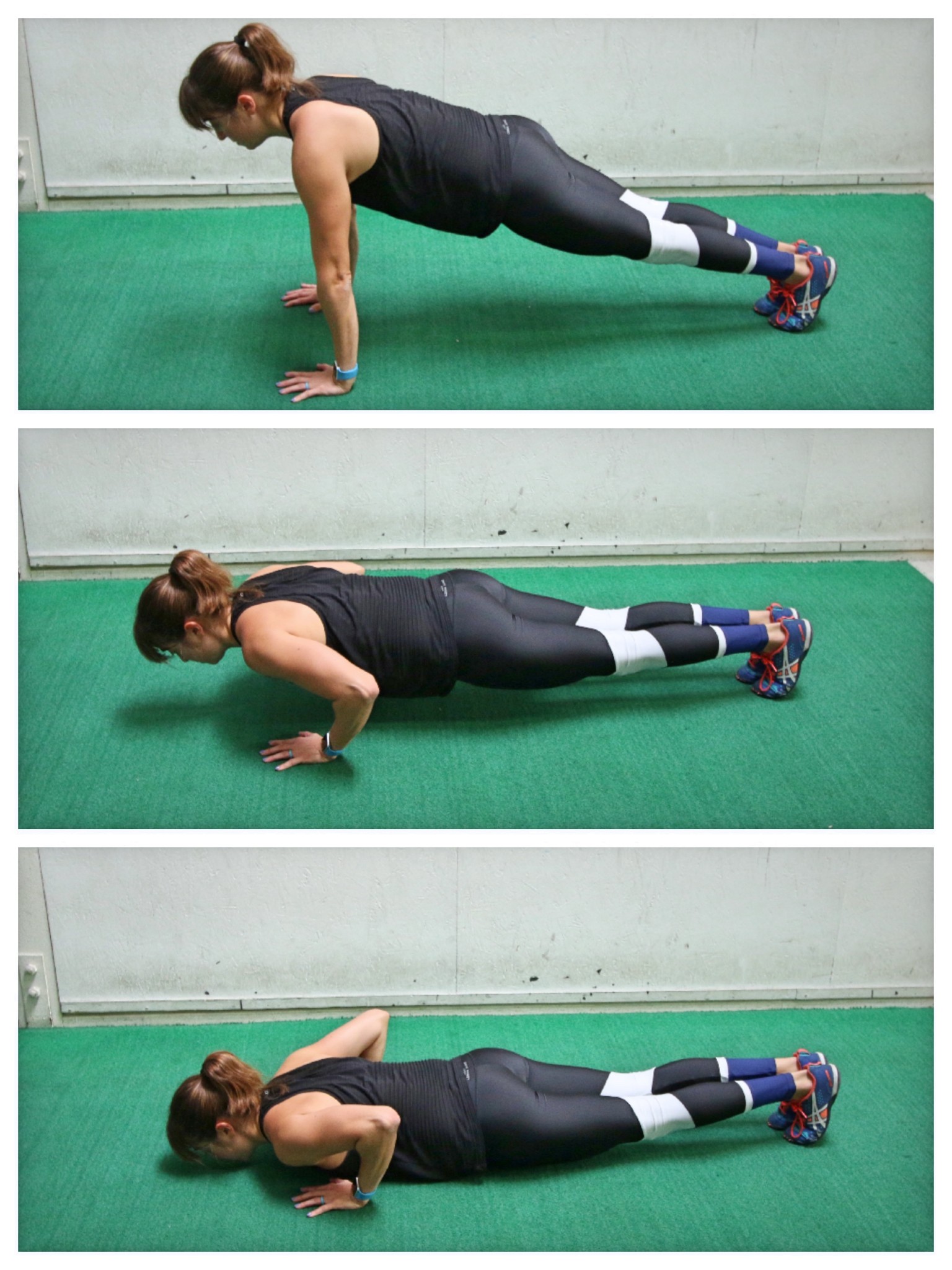
- High Push Up Hold – Use this hold to improve your lockout and strengthen your core and shoulders. To do the High Push Up Hold, set up at the top of a push up with your feet together and your hands under your shoulders but outside your chest. Your body should be in a nice straight line from your head to your heels (with your legs straight). Engage your abs, glutes, quads and back. Do not shrug your shoulders. Make sure your legs are engaged and you are driving back through your heels not coming forward onto your toes. Do not tuck your chin. To regress this move, hold from your hands and knees.
- Mid Push Up Hold – This is a great move to work your core, chest, shoulders and triceps. This move will be harder on your core than the high hold because you have to keep it even as your chest, shoulders and triceps ares struggling to work. Set up at the top of a Push Up with your feet together and your hands under your shoulders and just outside your chest. With your body in a nice straight line from your head to your heels, bend your elbows to about 90 degrees and lower and hold. Do not let your hips sink or your butt go up toward the ceiling as you hold at that mid-point. Do not tuck your chin or let your elbows flare way out. You want your arms and body to create an arrow shape. Hold as close to 90 degrees as you can. Regress the hold by doing it from your knees.
- Bottom Push Up Hold – This is the hardest of all three holds because you’ve got to keep everything engaged while holding an inch off the ground. This hold is great if you struggle to keep your core engaged as you press back up from the bottom of a Push Up. This is actually a great hold for any beginner looking to achieve their first full Push Up from their toes. To do the Bottom Push Up Hold, set up at the top of a Push Up and then, keeping your body in a nice straight line and everything engaged, lower down until your chest is an inch off the ground. Make sure to engage your glutes and quads to keep your body in a nice straight line. Do not tuck your chin, let your hips sag toward the ground or your butt go up in the air. Do not let your elbows flare way out as you hold. You can also do this from your knees or off an incline even. Really focus on engaging your entire core as you hold.
Jack Burpee:
Burpees are not only killer cardio moves, but can also be used to target a variety of muscles. And the Jack Burpee is a great way to work your abs more as well as even your glutes!
Because you have to hold that plank position to perform the plank jack, your core is going to spend extra time under tension. And the plyo jack at the top will not only help get your blood pumping but also even work your glutes a bit more.
Beginners may modify the move by stepping instead of jumping and may perform a basic jumping jack or even step jack.
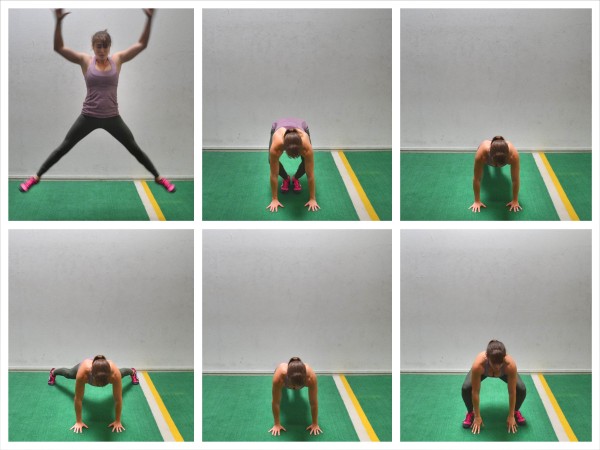
To do the Jack Burpee, start standing with your feet together. Then bend over and place your hands on the ground as you jump your feet back into a high plank position with your feet together.
From that high plank position with your feet together, jump your feet out wide. Do not let your butt go up in the air as you jump your feet out. Jump your feet back together then jump your feet into your hands and come up back up to standing.
As you lift your hands and come back to standing, perform either a basic Jumping Jack or a Plyo Jumping Jack. If you do the Plyo Jack, you will jump up off the ground as you spread your legs wide and swing your arms up to the side and overhead.
To regress the movement, step back into a plank position instead of jumping back. You can also step your feet out to the side and back in when doing the Plank Jack. And at the top, perform a Basic Jumping Jack or even no Jack at all.
The quicker you do the movement and the bigger and higher your Plyo Jack is at the top, the harder the move will be.
There are 3 parts to a proper core training routine – Activate, Integrate and HIIT. These three moves are perfect to Integrate. To learn more about all three components, click here.
Learn how to Activate, Integrate and use HIIT to build a strong, lean core!
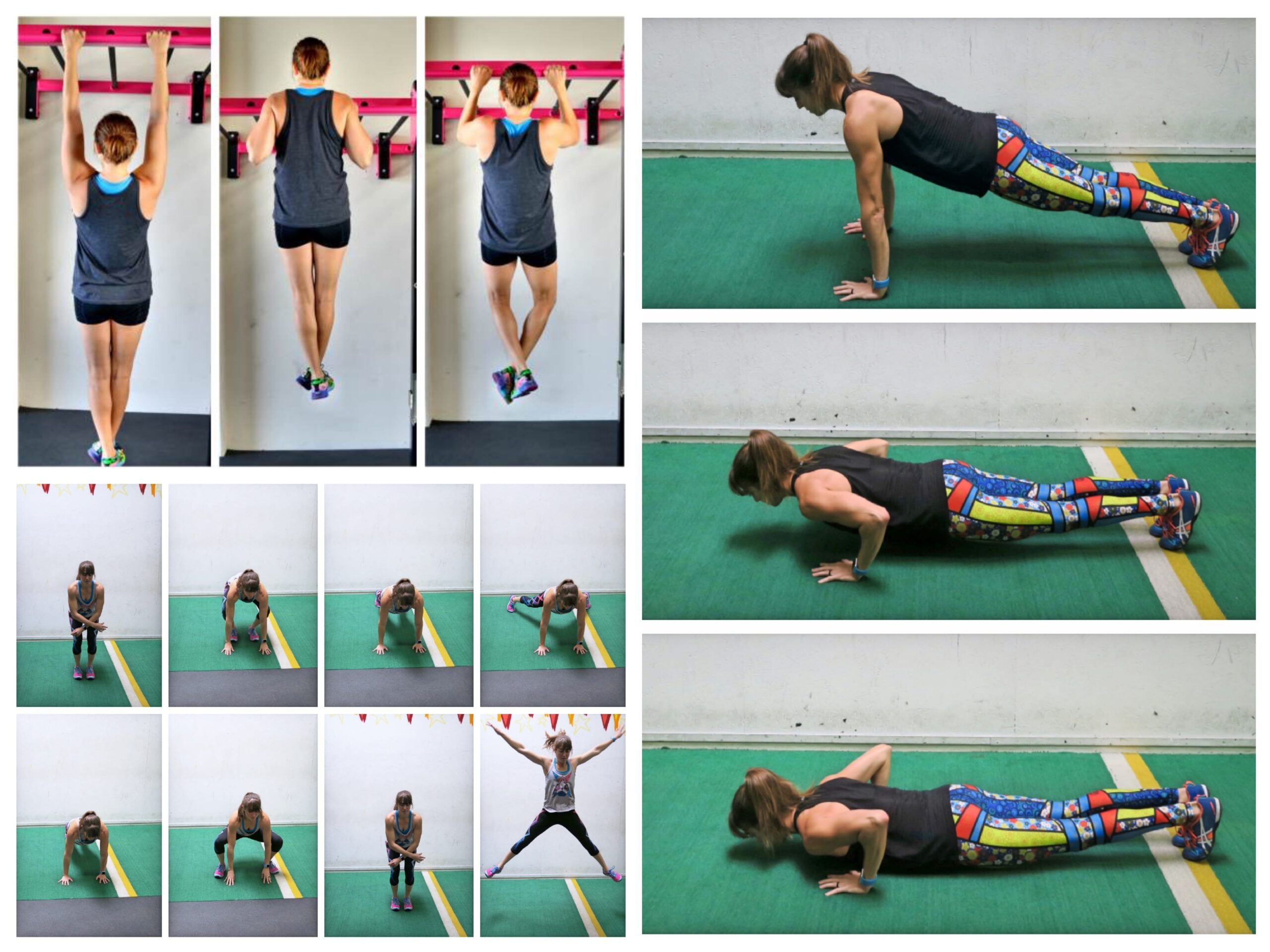
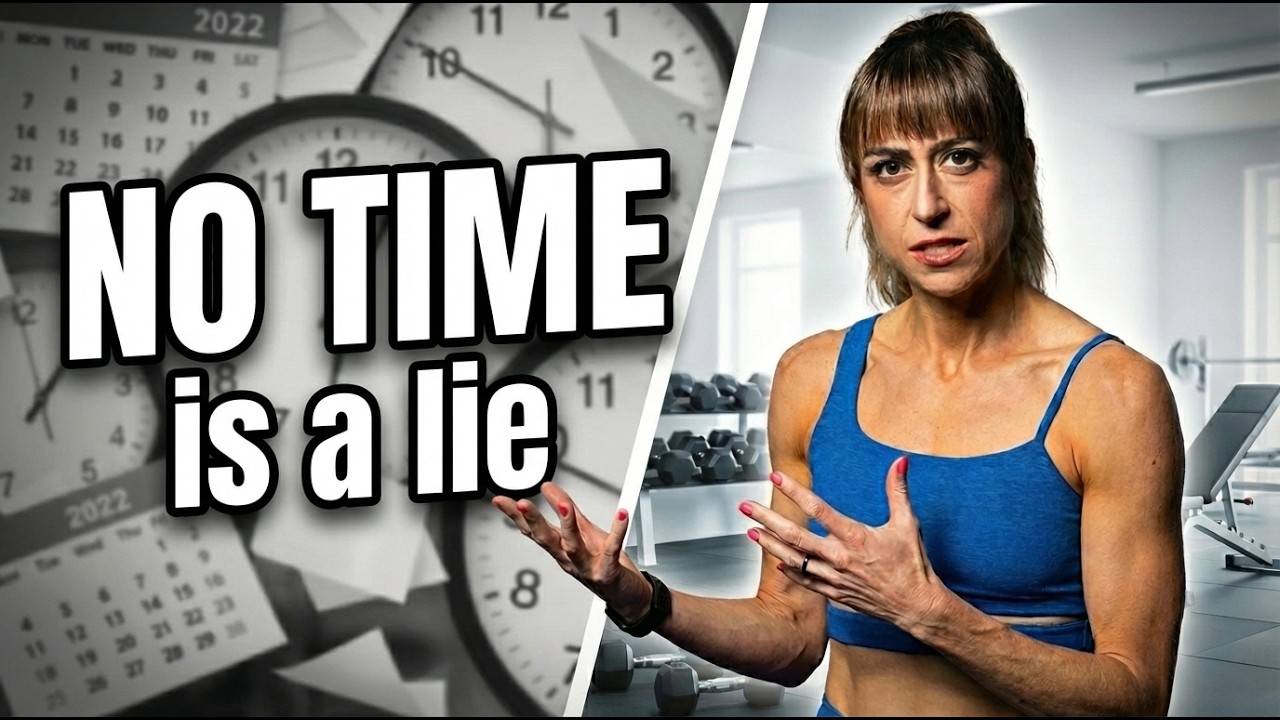
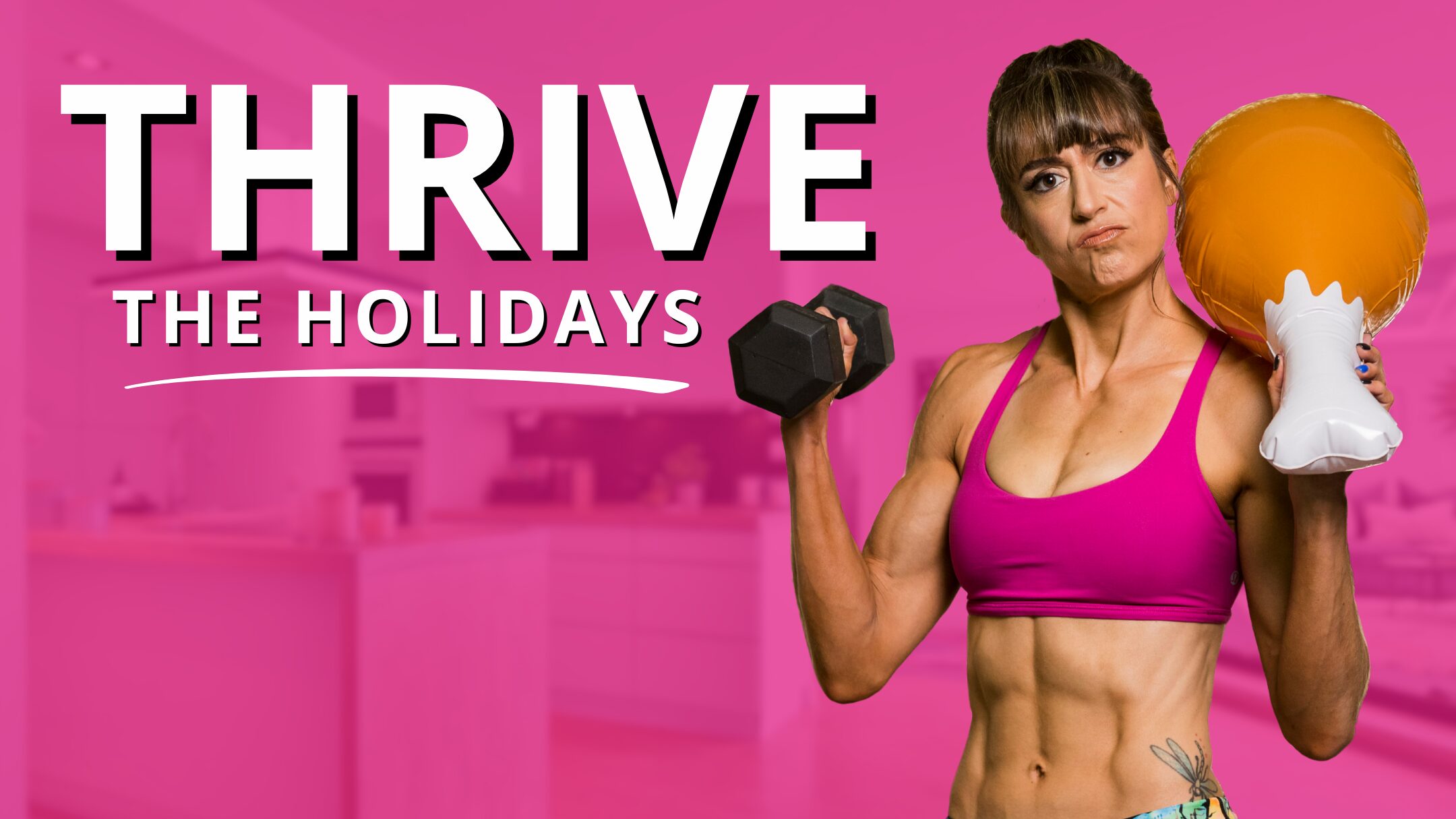
0 Comments